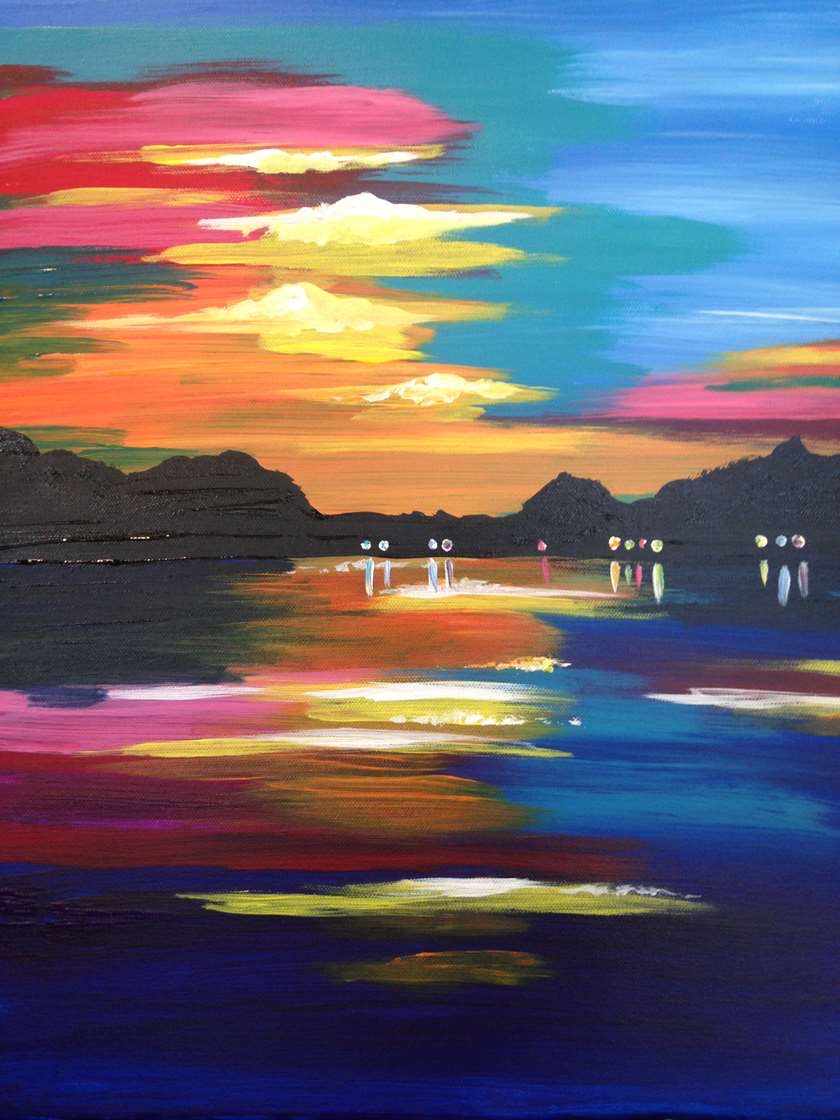What Color Makes You Feel Great?
As we approach winter in the midwest, it’s a reminder that blue skies and sunny skies positively affect our mood and lack thereof, can do the opposite. Aside from taking a LONG trip to sunnier places, what can you do to positively impact your mood during the shorter days of the year?

Over the past decade there’s been increased interest in understanding how basic colors impact how we feel or behave. Recent color studies searched for answers to the following questions...
- Does wall color at educational institutions impact student performance? Are the impacts different at different life stages (ie.elementary vs. college)?
- How does color impact people with autism, ADD, or depression?
- Does (sporting) team uniform color impact the frequency of penalty infractions?
- Does color impact our spending behaviors?
Overwhelmingly the answer was YES. Color does impact our health, mood and actions.
How exactly does it work? That’s more complicated. While it’s clear that color impacts us, the reaction varies. That’s because every person has different emotions attached to colors based on their life experiences, gender, nationality, age and even current and cultural trends.
So, if you are looking to tap into the positive power of color? Here’s what you can do…..
Start with your own personal color assessment. There’s no right or wrong answer and it’s quite simple with a bit of intention. Try looking at objects with different colors, shades or hues. What’s the first thing that comes to mind? How do the different colors make you feel?
Stuck? No worries ...here are some general themes that may help you get started.
- In multiple studies across different countries, genders and demographics, BLUE is consistently the most popular color. This is probably because, for many, Blue has a calming and relaxing effect due to its connection with the ocean and sky.
- RED has the longest color wavelength and as a result, it grabs our attention. It’s known to stimulate and in some it actually increases the pulse rate.
- YELLOW reminds us of the sun. It grabs your attention and is most often associated with caution, happiness or cheerfulness.
- GREEN symbolizes trees/nature and promotes thoughts of life, growth and harmony. There’s also a strong emotional correlation with safety.
- WHITE signifies hope, purity and simplicity.
- WARM COLORS are described as those that are bold or vivid and include Red, Yellow and Orange. Warm colors are most frequently associated with heightened emotions, passion and playfulness.
- COOL COLORS are Blue, Purple and Green and are often described as making people feel calm, relaxed and refreshed.
Remember, color impacts people differently and there are no right or wrong answers. The trick is figuring out how color impacts YOU.
Once you find your color, the next step is to introduce it into your home or office. This doesn’t necessarily mean permanent choices like new wall colors. Consider changing out your bedspread or introducing new art, wall hangings or pillows. All of these can be full of colors that bring a different energy into a room.
So next time you find yourself looking out the window and longing for that next sunny day, surround yourself with colors that make you feel GREAT! Find creative ways to use colors to brighten your cloudy day.
Sources:
Color Has a Powerful Effect on Behavior, The New York Times
Colorpsychology.org
Color and psychological functioning: a review of theoretical and empirical work ncbi.nlm.nih.gov
How Colors Can Affect Your Mood, SUCCESS.com

